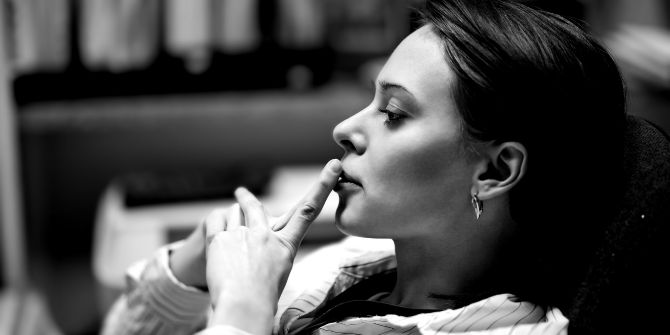Discrimination is costly and illegal in many OECD and other countries, including the UK. It can result in suboptimal hiring decisions, with unnecessary social and economic losses. So, why does it keep happening? Nikita analyses the issue under the light of dual-process theory, with its System 1 and System 2 types of cognitive processes popularised by Nobel laureate Daniel Kahneman. She writes that discrimination arises because of simultaneous failures in both of these systems.
As the integration of women, migrants, people of colour and other disadvantaged groups improves, the workforce is becoming increasingly diverse. However, many individuals from various disadvantaged/minority groups are still experiencing labour market discrimination and worldwide research shows it. A meta-analysis conducted from 1990 to 2015 in OECD countries revealed that to score a job interview, minority applicants had to write on average 50 per cent more applications than majority groups. Discrimination is outlawed in many OECD and other countries, including the UK, as per the Equality Act 2010.
The consequences are grave for individuals, society and organisations. Discrimination not only hinders equal opportunities but also inhibits diversity of people, perspectives and thoughts by putting barriers to entry into a company. Research has shown that diverse organisations perform better financially, and their workplaces tend to be more effective. As discrimination treats candidates based on cues unrelated to their job qualifications, it can result in suboptimal hiring decisions and minorities’ decreased prospects of entering the labour force, which could lead to unnecessary economic losses for society and subvert the larger societal goals of equal opportunity and social justice.
I analyse the issue under the light of dual-process theory in reasoning, judgement and decision-making. System 1 and System 2 are labels for the two types of cognitive processes popularised by the 2012 book “Thinking, Fast and Slow”, by Nobel laureate Daniel Kahneman. Discrimination arises when these systems malfunction.
System 1 and System 2 thinking
The thinking processes in System 1 are led by heuristics (rule-of-thumbs that provide quick and implicit reactions to specific issues) and cognitive scripts (the knowledge structures that direct behaviour in known circumstances).
To prevent cognitive overload, System 1 requires less effort, relying on associative memory and being generally intuitive and automatic. System 2, on the contrary, is intentionally controlled and arise from gradual thoughtful evaluation and normative rules. System 2 processes are usually rational, explicit efforts that are flexible to change and rely on working memory. Beyond executing complex cognitive functions, System 2 has the role of monitoring the outcomes of System 1 processes, which it may approve, correct or override.
Decision-making errors
Discrimination in hiring can be considered an error in judgement and reasoning. System 1 finds it useful to rely on simple heuristics for help in making complex decisions. But heuristics can also lead to biased judgements. System 1 can generate a biased intuition quite rapidly, just out of habit, and System 2 can be slow or even fail to detect and correct this biased judgement. Thus, errors in judgement and reasoning arise from simultaneous failures in both systems.
Discrimination in hiring can happen when recruiters base their judgement of a candidate on faulty intuitions of their System 1 operations and their System 2 processes fail to monitor or correct this lapse of judgment.
One example: a candidate’s gender can trigger prejudices about sexes and a recruiter may rely on System 1’s heuristic of a gender-based notion of ‘competency’ in their hiring decision. Because the identity bias, which is unconscious, creeps into the decision-making process, men can end up being perceived as more competent than women.
The decision-making error occurs when the recruiter’s System 2 fails to monitor and correct operations of System 1, causing discrimination against candidates based on their gender. But this can be avoided. Prejudiced impulses conflict with the recruiter’s situational and task-related goal, so they can activate the conscious processes of System 2 to help them impede or correct the behavioural impulses by introducing more controlled behaviours.
Preventing recruitment discrimination
Poor recruitment practices and the absence of standards can prolong, amplify, and even institutionalise different biases in hiring. The dual-process model can be used to redesign the hiring cycle to avoid these biases.
Possible interventions at different stages of recruitment target one of the two systems. For System 1, anonymising the identifying characteristics of a candidate, or ‘blinding’ the hiring process, has been a popular intervention. Research shows that mentioning identity characteristics like the name of the candidate on a resume can prominently trigger identity biases in hiring managers and lead to discrimination against candidates. For certain jobs like musicians, it is possible to effectively blind the entire hiring cycle, as shown by a study done with American orchestras in which the probability of women being hired increased in blind auditions.
In jobs where complete blind hiring is not possible, initial screening can be anonymised by blinding the resumes. Research shows that this could be useful in improving the probability of minority hiring at the pre-interview stage in countries where resumes have candidates’ pictures.
However, anonymisation may not help firms that already actively focus on diversity and inclusion in the workplace. In a French study, minority candidates received lower callbacks with anonymised resumes and the researchers attributed this to self-selection, because the firms that agreed to participate in the study were ones that typically hired relatively more minority applicants than other firms. Anonymous applications inhibited them from selecting minority candidates in the hiring pool.
Building structure throughout the interview process can enable unbiased decision-making. Examples include standardised interview questions, rating scales and panel discussions. Unstructured interviews make it possible for people to exchange information that is not related to work, so they tend to have lower validity and reliability than structured ones. Hirers could depend on their implicit intuitions and be predisposed to biases. Structures can help activate recruiters’ System 2, allowing them to gather individual-level information relevant to the hiring for all the candidates. Standardisation helps people adjust their initial biased perceptions and judgements and the anticipation of the panel discussion can keep them from forming an impression too soon without assessing the candidate fully.
The perceived similarity between the hiring manager and the interviewee can influence the assessment, but research shows that this effect subsides in very well-structured interviews. Structured interviews reduce biases towards pregnant women and people with physical disabilities, significantly decreasing the probability that interviewers will depend upon their System 1 processes while making the final decision.
Conclusion
Discrimination in hiring arises when System 1 relies on biased intuitions to make a judgement about a candidate and System 2 fails to correct it. A bundle of behavioural change interventions that target System 1 and System 2 processes can be used to combat discrimination at different stages of recruitment.
Despite being illegal in many countries, recruitment discrimination is a pervasive global issue that disfavours disadvantaged groups and leads to suboptimal hiring outcomes. It is an error in judgment, resulting from the recruiter’s reliance on System 1’s biased intuitions and System 2 failing to override it. These biases can arise from stigmas associated with disadvantaged groups and persist even in organisations with affirmative actions and policies. A bundle of behavioural interventions that target different cognitive processes can be deployed to prevent biased System 1 thinking and to activate the rational System 2.
- This blog post represents the views of the author(s), not the position of LSE Business Review or the London School of Economics and Political Science.
- Featured image provided by Shutterstock
- When you leave a comment, you’re agreeing to our Comment Policy.





